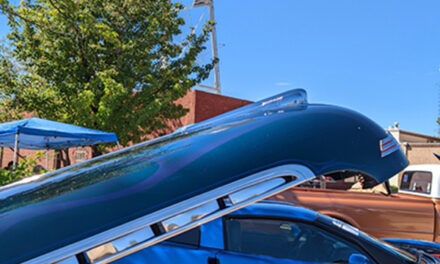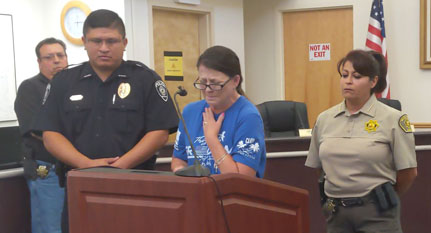Albuquerque
The effects of Chief Judge James Parker’s decision to release Heron Reservoir water will be felt by farmers in Valencia and Socorro counties, conservancy officials say.
“This will really hurt the MRGCD (Middle Rio Grande Conservancy District) farmers because it will really cut into their supplies,” said Subhas Shah, CEO and chief engineer of the district.
“We will not be able to store any water in the El Vado Dam because of the Rio Grande Compact and Elephant Butte going below 400,000 acre feet,” Shah said.
The Rio Grande Compact prohibits New Mexico from storing any Rio Grande water in reservoirs when the water level at Elephant Butte falls below 400,000 acre feet, as it is now.
In a temporary injunction order in U.S. Court in Albuquerque on Sept. 18, Parker ordered the U.S. Bureau of Reclamation to release water to preserve the silvery minnow habitat in the Rio Grande. Lawyers for the state, the City of Albuquerque and the MRGCD have vowed to appeal the decision.
According to Area Manager Ken Maxey of the Bureau of Reclamation, Heron had roughly 250,000 to 275,000 acre feet of water in April, 2002, and Maxey estimates Heron’s current content at 158,000 acre feet. Heron’s full capacity is 400,000 acre feet.
The City of Albuquerque is the largest San Juan-Chama contractor of available Heron water with 48,200 acre feet reserved for its use and the MRGCD entitled to 20,900.
“Only 20,900 acre feet of water in Heron belongs to MRGCD,” Shah explained. “The judge is going to take away some water proportionately from individual contractors for the minnow, which will leave less water available next year.”
Two of those contractors are the Belen and Los Lunas areas, which are entitled to 500 acre feet and 400 acre feet, respectively, of Heron water. Right now, county farmers have no supplemental water available for irrigation, which usually extends through October, and many farmers have not planted fall crops.
“Obviously, we are going to appeal the decision,” said MRGCD attorney Charles Dumars. “The amount of water available would not be available next year if the minnow takes it. He (Parker) lumped private water rights in the same group as San Juan-Chama.”
The Fish and Wildlife Service (FWS) came out with a 33-page biological opinion last week, which advocated that Heron water not be used this year in order that it might be available to preserve the Rio Grande silvery minnow habitat next year.
In Parker’s Sept. 18 ruling, he relieved the FWS of further flow regulations under the biological opinion, which was set to run through Dec. 31, 2003. However, Parker mandated under the injunction that the Bureau of Reclamation “must maintain a flow of 50 cubic feet per second at San Acacia.” Parker also required the bureau to compensate any contractors who do not get full supplies in the future.
Parker, in his opening remarks regarding his decision, admitted that “it’s a very hard decision for me to make.” He then explained why he did not agree with the FWS biological opinion.
“The Aug. 2, 2002, opinion’s argument is capricious because the bureau did not consider water delivery for 2002,” Parker said.
Attorney Laird Lucas, who pleaded the case for environmentalists and the silvery minnow, said Parker’s decision of “arbitrary and capricious” against the FWS opinion means “they didn’t base their decision on the best possible science.”
“We won on the claim that it would cause jeopardy (to the minnow) …” Lucas said. “There are no clear winners in this case. We really didn’t want to come here.” Both Lucas and plaintiff’s attorney Letty Belin practice law in Santa Fe.
The city, state and MRGCD have 30 days within which to appeal Parker’s decision.
“Normally, it’s 30 days, but we expect it to be sooner,” said Maria O’Brien, attorney for the City of Albuquerque.
The appeal would be heard in the 10th Circuit Court of Appeals in Denver.















